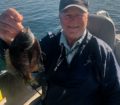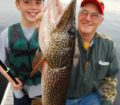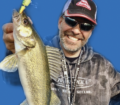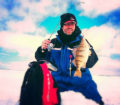By Steve Weisman
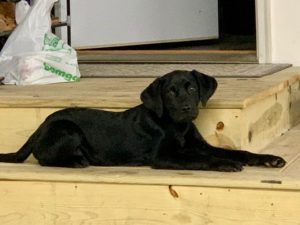
(photo by Curt Weisman) Earlier this year, Avery relaxes on the steps of the garage waiting for Curt to call her to “work.”
Here we are pushing the end of July, and the early hunting seasons are only 4-6 weeks away. It brings to mind the importance of our hunting dogs. Beginning in September, they take center stage. Whether it is in the duck blind or on land, our hunting dogs do what they have been bred to do: hunt. And it is so much fun to witness their passion to hunt.
Why am I talking about this? Because these next few weeks can be a good brush up time, everything from simple commands to different levels of retrieving…you name it. This “tail end summer season” is a good time for brushing up.
I know because I have been there. I’ve had both well trained and wild-off-the-wall hunting dogs, and the solution/problem was always ME! Over the course of having three hunting dogs, I have learned the importance of the owner’s responsibility for a well-trained hunting dog. I also learned early on the puppy’s bloodline, the behavior of the parents and of me, the hunter/owner, go a long way toward a good, well trained hunting dog.
There are great books, articles and dog training videos that can be of great help. One of the things that I think has benefited us with our hunting dogs is that they have been both hunting dogs and house dogs. I think it makes the bond that much deeper.
Although I don’t have a hunting dog anymore, I am on the sidelines as my son, Curt and Kris (his wife) raise Avery, their young black Labrador puppy. She came from TLC Labradors in Stanton, NE, and between the two of us, this will be our fourth puppy from TLC. Mark and Traci Christensen, owners, make a great team in providing outstanding breeding, puppy socializing and also extended training. Mark, himself, has trained well over 1200 dogs with great success.
Avery arrived in early January and has forever changed the lives of Curt and Kris. Since that time, they have spent a lot of time devoted to developing Avery’s bond and discipline. What is amazing to me is just how much puppies learn; they are kind of like a sponge. There is little doubt that Avery is becoming well socialized. She’s part of the family and in many instances the center of everything.
When I was raising my own hunting dogs, I found the toughest thing was consistency. I quickly learned that proper repetition is the mother of all learning-for both owner and puppy. And, yes, I made a lot of mistakes that I wish I would have done differently. One thing that I did do with my last dog, a yellow lab named Shasta was at about 16 weeks, I sent her back out to TLC for a month. I felt comfortable doing this because in our 8 weeks together, she had become well socialized and knew her basic commands and had some whistle training down. I just wanted that four weeks with a professional trainer to get us a little further down the road-the right way.
As I have watched hunting dogs over the years, I’ve come to believe in this. If, as an owner, you feel you don’t have the time or the patience to work with your puppy, then a great option is sending the puppy back to the breeder or to a reputable dog trainer. I have several hunting buddies who have done this for as long as 3-4 months, and they have had great results. The key is, however, to know what the trainer has taught and to keep things in order. If you get sloppy or aren’t disciplined yourself, the dog will regress. The dog will do whatever the owner lets it get away with! Just like human beings!
So, that’s why when Curt said he was going to send Avery back out to TLC for two months beginning in early July, I encouraged him to do so. At over eight months of age in early July, by the end of August, Avery will have received two months of what I call advanced “boot camp.” She’ll get schooling that she needs. In visiting with Mark, he notes that each dog is different. “The first week to 10 days are for evaluation, to get the dog acclimated and so that I get to know the dog. We’ll take a lot of walks together. Then in the second week we move into teaching and enforcing – making them do things right. I use positive training, and when the dog makes mistakes (which I want them to do), we teach them to do things right.”
The third week is getting the dog to come – with distractions around them – no matter what. Then by the second month, Mark works on gun conditioning and retrieving with a dummy launcher. This is a crucial time, because the last thing an owner wants or needs is a hunting dog that is scared of the sound of a gun. Next comes the introduction to dead birds and then live birds. Finally, Mark will move to shooting live birds over the dog.
The good news is she’ll be back by the first of September and ready to experience her first season afield. All of this training should help put Avery on the fast track to success as both an upland and waterfowl dog. It will then be up to Curt to keep her moving forward always following the way that Mark worked with her.
Yes, it’s soon going to be that time of year when our hunting dogs take center stage. Make sure your hunting dog is ready! As for me, I can hardly wait to see what the schooling has done for Avery. I can’t wait to watch her progress!

